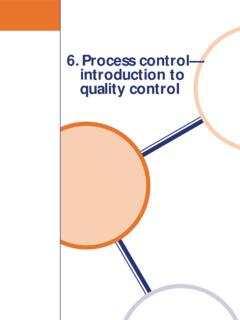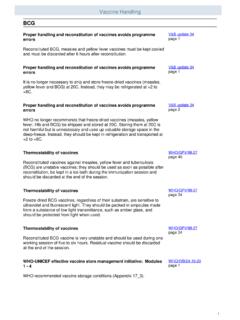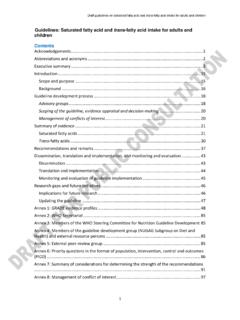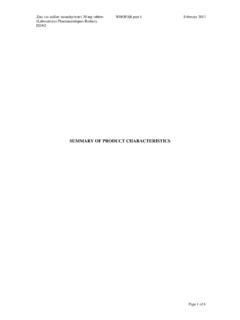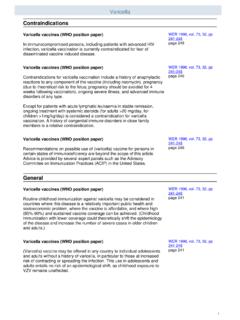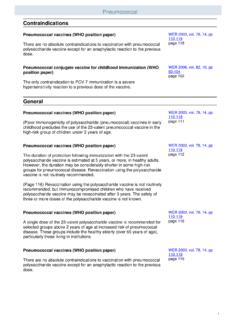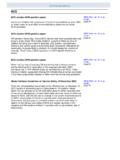Transcription of Guidelines for Management of Stroke
1 1 Guidelines for Management of Stroke Ulaanbaatar 2012 2 Contents Abbreviations 4 Introduction 5 А. General Part 6-8 А.1. Definition of Stroke А.2. International Classification Disease Codes А.3. Users of this Guideline А.4. Objective А.5. Processed Data А.6. Update Data А.7. Participants in preparing this guideline А.8. Used terminology Epidemiology B. Management of Ischemic Stroke 8-20 Evaluation and Management of acute Stroke Orders and steps of emergency medical services Referral and patient transfer Emergency room Management of Acute Stroke diagnosis of Stroke Treatment decisions by Stroke team Treatment for Ischemic Stroke General Stroke treatment Specific treatment Thrombolytic therapy Management for Hypertension Management of hypertension in patients eligible or not eligible for thrombolytic therapy Antiplatelet and anticoagulant therapy 3 D.
2 Management of Spontaneous Intracerebral Hemorrhage 20-26 diagnosis of Intracerebral hemorrhage Treatment of acute Intracerebral hemorrhage Air way and oxygenation Medical treatment Blood pressure Management Surgical removal of Intracerebral hemorrhage D. Management of Aneurysmal Subarachnoid Hemorrhage 26-30 Manifestations and diagnosis of aneurysmal SAH Medical Management of SAH Surgical and endovascular treatment of ruptured cerebral aneurysms Medical measures to prevent re-bleeding after SAH Management of cerebral vasospasm E. Management of complications in Strokes 31-34 Therapy of elevated Intracranial pressure and Hydrocephalus Management of intracranial pressure Prevention and Management of other complications in Strokes F.
3 Rehabilitation 34-35 H. Prevention of Stroke 35-39 Primary prevention Secondary prevention I. Application of the Guidelines for Management of Stroke in each level of medical organizations 40 References 41 4 Abbreviations AF atrial fibrillation BP blood pressure CAS carotid artery stenting CEA carotid endarterectomy CE-MRA contrast-enhanced MR angiography CSF cerebral spinal fluid CT computed tomography CTA computed tomography angiography CV cardiovascular DSA digital subtraction angiography DWI diffusion-weighted imaging ECG electrocardiography ED emergency department EEG electroencephalography EMS emergency medical service FLAIR fluid attenuated inversion recovery ICA internal
4 Carotid artery ICP intracranial pressure INR ICH international normalized ratio Intracerebral hemorrhage iv IS intravenous Ischemic Stroke LDL low density lipoprotein MCA middle cerebral artery MI myocardial infarction MRA magnetic resonance angiography MRI magnetic resonance imaging mRS modified Rankin score NASCET North American Symptomatic Carotid Endarterectomy Trial NIHSS National Institutes of Health Stroke Scale NINDS National Institute of Neurological Disorders and Stroke OSA obstructive sleep apnoea PE pulmonary embolism PFO patent foramen ovale pUK pro-urokinase QTc heart rate corrected QT interval RCT randomized clinical trial rtPA recombinant tissue plasminogen activator SAH Subarachnoid hemorrhage TCD transcranial Doppler TOE transoesophageal echocardiography TIA transient ischemic attack TTE transthoracic echocardiography UFH unfractionated heparin 5 Introduction Stroke is one of the leading causes of morbidity and mortality worldwide.
5 WHO statistics indicate that all types of Stroke ranked cause of death (13-15%) as the third and surpassed only by heart disease and cancer. Each year persons suffer from Stroke worldwide out of which and up with mortality and the remaining have been deeply disabled. Each year, Mongolia registered 270-290 cases of Stroke in populations ,thereby belonging to countries with higher incidence of Stroke . Many advances have been made in Stroke prevention, treatment, and rehabilitation. For example, thrombolytic therapy can limit the extent of neurologic damage from Stroke and improve outcome, but the time available for treatment is limited.
6 Healthcare providers, hospitals, and communities must develop systems to increase the efficiency and effectiveness of Stroke care. The 7 D s of Stroke Care detection, dispatch, delivery, door (arrival and urgent triage in the emergency department [ED]), data, decision, and drug administration highlight the major steps in diagnosis and treatment and the key points at which delays can occur. The goal of Stroke care is to minimize brain injury and maximize patient recovery. The community-oriented Stroke Chain of Survival that links actions to be taken by patients, family members, and healthcare providers to maximize Stroke recovery are the following: - Rapid recognition and reaction to Stroke warning signs; - Rapid emergency medical services (EMS) dispatch; - Rapid EMS system transport and hospital pre-notification; - Rapid diagnosis and treatment in the hospital; - Rehabilitation; - Primary prevention; - Secondary prevention; The Guidelines summarize the Management of 3 types of acute strokes: (1) Ischemic Stroke and Transient Ischemic Attack; (2) Intracerebral Hemorrhages.
7 And (3) Aneurysmal Subarachnoid Hemorrhage in the adult patients. The Guidelines for Management of strokes developed by leading experts of Mongolia were approved by the Council of Neurology at Ministry of Health Mongolia and recommended to introduce into out-of-hospital and ED assessment and In-hospital Stroke Management . 6 A. General A1. Definition of Stroke Stroke is an acute focal neurological deficit caused by a vascular lesion; The onset is sudden and the symptoms last longer than 24 hours, if the patient survives. Ischemic Stroke is an acute focal neurological deficit caused by a vascular occlusive lesion with sudden onset and symptoms lasting longer than 24 hours.
8 Transient ischemic attack is a neurological deficit lasting less than 24 hours, with complete clinical recovery, caused by focal hypoperfusion within the brain. Intracerebral hemorrhage is an acute focal neurological deficit caused by rupture of microaneurysms secondary to chronic hypertension. Subarachnoid hemorrhage is a spontaneous arterial bleeding into the subarachnoid space, caused by rupture of arterial aneurysm or AVM. А.2. International Classification of Disease codes (ICD-10) I63-I67: Cerebral Infarction G45-G46: Transient Ischemic attack : Intracerebral Hemorrhage : Subarachnoid Hemorrhage Users of this Guideline The Guidelines would be used by personnel of Emergency Aid, Stroke Units, Neurological Clinics and Neurosurgery and Rehabilitation specialists.
9 Objective These Guidelines are directed to emergency room personnel sand Stroke specialists for Management of acute ischemic Stroke , TIAs, Intracerebral and subarachnoid hemorrhages and their prevention in the modern era. Processed Date: From June to September 2011 Update Date: 2016 Participants for preparing this guideline: Consultant Neurologist, Department of Neurology, Health Sciences University WHO consultant Chairman, Neurological Center, State Third Central Hospital Director, Reflex Hospital Head of Neurological clinic, State First Central Hospital Neurologist, State Third Central Hospital Neurologist, State Third Central Hospital Neurologist, State First Central Hospital Neurologist, State First Central Hospital Neurologist, State First Central Hospital 7 Anesthesiologist, State Third Central Hospital Neurosurgeon, State Third Central Hospital Neurologist, Reflex Hospital Medical Research Institute.
10 President of Mongolian Neurology Association Department of Neurology, HSUM Head, Department of Neurology, HSUM Standardization and Measurement Agency Millennium Challenge Account Mongolia, Project of Health personnel PMO/Team Leader HSD, NCD, MCH, ENH WHO Mongolia WHO, Project of Stroke and Heart Infarction Review and confirmation of Guidelines : Organizations Responsible for completion Meeting for Guidelines developing working groups under MOH; from Aug, 2011 to Nov,2012 (6 times) Meeting of Mongolian Neurology Association s governors 27th Aug,2011 Chief, Working group President of Mongolian Neurology Association MOH, Board of Neurology; 16thFebruary, 2012 MOH, Board of Neurology; HSUM, Council of terminology; 17th February, 2012 HSUM, Council of terminology; MOH, Health medical aid and standardization technical committee; Meeting of MOH governor 15th Nov,2012 MOH, Government Implementation Agency - Department of Health.

